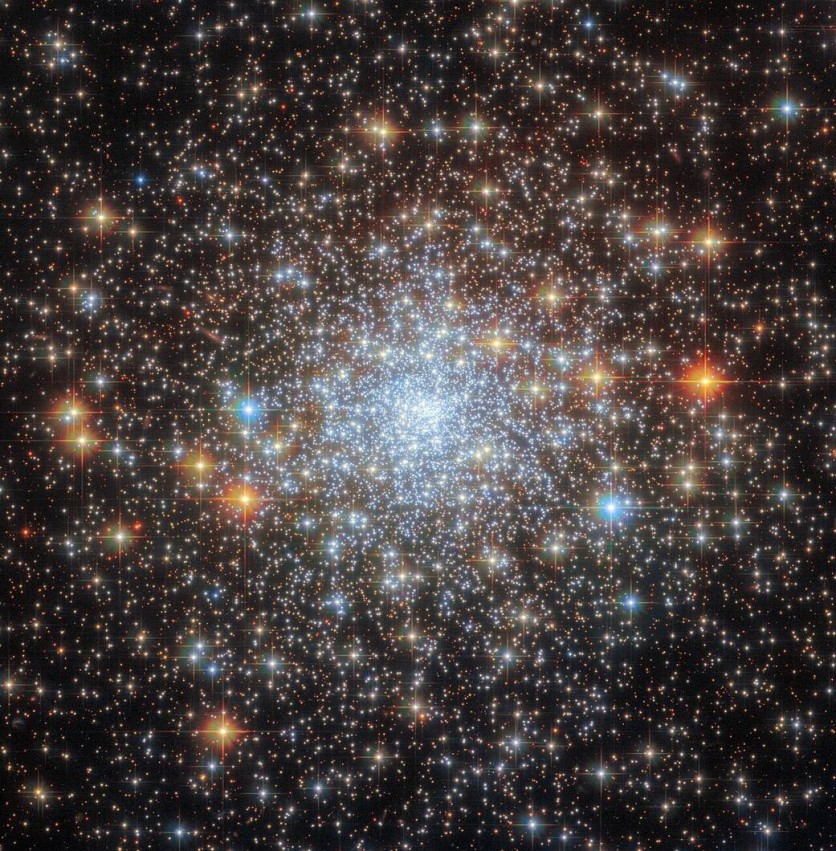NASA's Hubble Space Telescope has been captivated by a dazzling cosmic spectacle as it gazes upon this star-studded globular cluster NGC 6652.

Soft Blue Luminescence on the Core of the Cluster
This image showcases the resplendent treasures within this celestial gathering, with the cluster's core emanating a soft blue luminescence, a manifestation of the myriad stars it hosts. Interestingly, a few luminous foreground stars exhibit intricate diffraction spikes that crisscross the image.
NGC 6652, positioned within our Milky Way galaxy in the constellation Sagittarius, lies approximately 30,000 light-years away from Earth and is a mere 6,500 light-years from the galactic center.
NGC 6652 is a globular cluster, a densely packed spherical collection of stars held together by gravity. This cluster is positioned relatively close to the center of the Milky Way, approximately 6,500 light-years away from the galactic center.
Globular clusters like NGC 6652 are known for their stability and contain a large number of stars, ranging from tens of thousands to even millions.
Globular clusters are considered some of the oldest objects in the universe, and their study provides valuable insights into the early stages of galaxy formation.
They are composed of stars that formed around the same time within the same molecular cloud, and they often have distinctive properties such as a spherical shape and a concentration of stars toward their center.
These tightly-knit assemblages of stars are remarkably stable and gravitationally bound entities encompassing a diverse array spanning thousands to millions of stars.
The cohesive gravitational forces operating amidst the closely clustered stars contribute to the distinctive spherical form that characterizes these mesmerizing cosmic gatherings.
This image mixes data collected by two of Hubble's most high-powered cameras: the Advanced Camera for Surveys and the Wide Field Camera 3.
Product of Two Observational Projects of NASA
According to NASA, this rich composite also incorporates insights from two distinct observational projects, each led by a separate group of astronomers.
The initial team embarked on an ambitious quest to survey the globular clusters strewn across our Milky Way galaxy, endeavoring to unravel their enigmatic aspects, including their ages and the gravitational dynamics they bestow upon the entire galaxy.
The second assembly of astronomers, in a meticulous investigation, harnessed the formidable capabilities of Hubble's Wide Field Camera 3. Employing an intricate trio of filters, they dissected the elemental proportions of carbon, nitrogen, and oxygen within the complex fabric of globular clusters such as the radiant NGC 6652.
In this breathtaking cosmic portrait, NGC 6652 emerges as a celestial jewel, a testament to NASA's Hubble Space Telescope's prowess in capturing the grandeur and intricacy of our universe's most captivating enigmas.
Related Article : NASA's Hubble Space Telescope Captures 'Butterfly Nebula' In Stunning Motion | Fun Facts About This Beautiful Space Butterfly

ⓒ 2026 TECHTIMES.com All rights reserved. Do not reproduce without permission.




